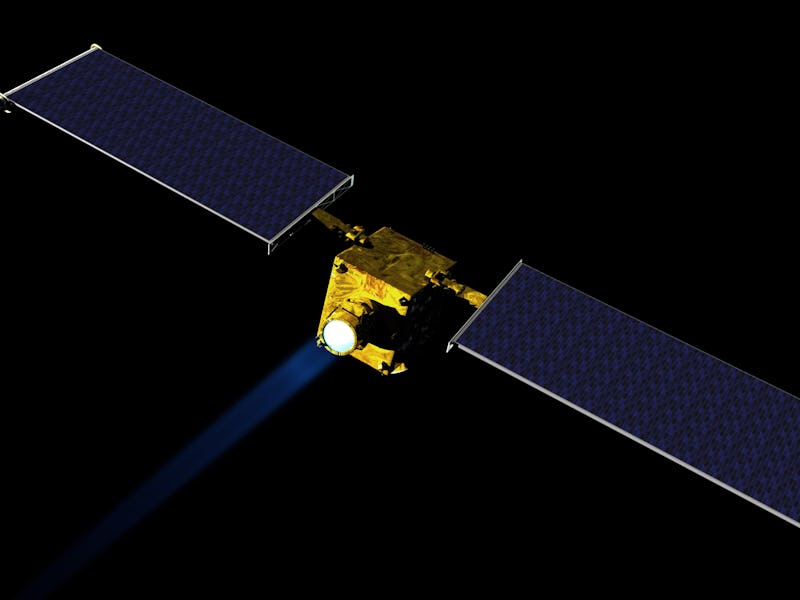The best option we have to protect Earth from a dangerous asteroid is to knock it off-course, but scientists aren’t yet certain about how we’d manage that plan, since we’ve never actually tested it. Luckily, NASA has now approved a project that will do just that: the Double Asteroid Redirection Test (DART), in which a satellite will strike an asteroid when it’s about 9.9 million miles away from Earth in the early 2020’s.
NASA has been contemplating this project — of which astrophysicist & Queen guitarist Brian May is a big fan — for a while now, but officially decided to move it to the preliminary design phase on June 23.
The object of the satellite’s strike is Didymos B, a small asteroid in the Didymos system. The DART spacecraft will use an autonomous targeting system to fly at Didymos B at about 3.7 miles per second (nine times the speed of a bullet). The asteroid won’t budge much, but the impact should be enough to significantly change its course over the long term; this method of asteroid defense is called the “kinetic impact technique.”
Didymos B isn’t on a collision course with Earth, nor is its orbit near enough to allow it to pose a danger if the DART satellite knocks it in some unexpected direction, so the trial is completely safe. Didymos B orbits around another asteroid, Didymos A, and scientists plan to observe how its orbit changes in response to the craft’s impact. They will then infer how the same process could help stop an asteroid that was on a path toward Earth.
NASA released this concept animation showing the DART craft striking Didymos B:
Didymos B will be closest to Earth in 2022 and 2024, so NASA hopes to launch the DART satellite sometime around then. A team at the Johns Hopkins Applied Physics Laboratory is designing the craft, so the pressure’s on them to make that deadline.
“DART is a critical step in demonstrating we can protect our planet from a future asteroid impact,” said the Johns Hopkins lab’s Andy Cheng in a press statement. “Since we don’t know that much about their internal structure or composition, we need to perform this experiment on a real asteroid.”
Asteroids are “the only natural disaster that we can prevent,” according to researcher Carrie Nugent. This experiment might help to save us all.
